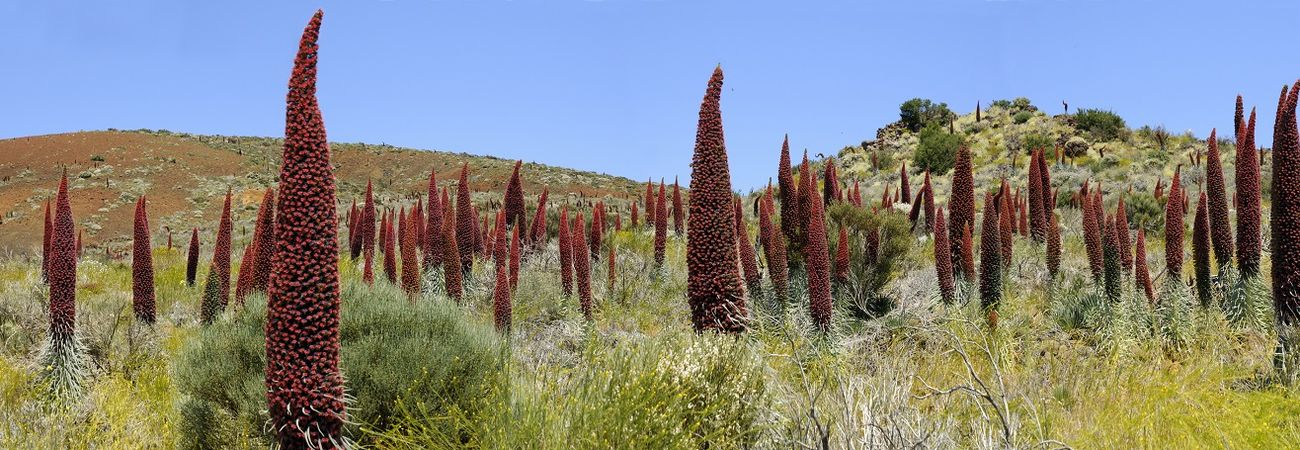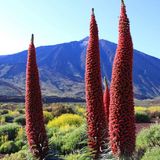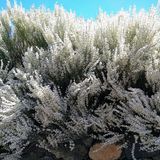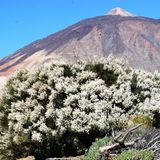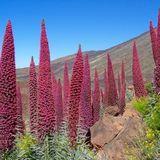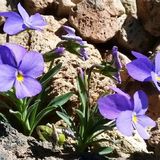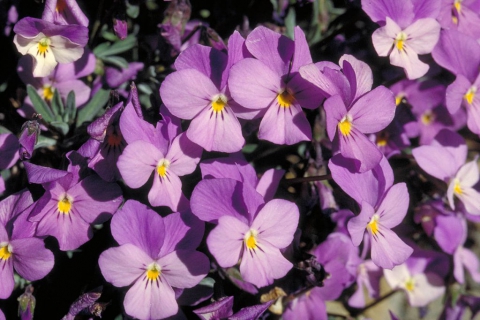Flora
The plant world is another of the outstanding features of the Mt. Teide National Park, where plant species are fully adapted to the tough living conditions of high altitude, intense sunlight, extreme temperature variations and lack of moisture. The vegetation has colonized this world of lava step by step, putting down roots in the almost inexistent, but nutrient and mineral rich soil, where lichens usually form the only vegetation cover of non-vascular flora that covers the recent lava flows of the Park. Hence, the diversity of plant species in the Mt. Teide National Park has a striking wealth, including an abundance of species that are endemic either to the island, regionally or even locally endemic.
Inventory
Over the centuries, these plants have evolved to adapt to the extremely tough environmental conditions, acquiring semi-spherical forms, reducing the exposed leaf area, the acquisition of a downy or waxy cover, high flower production, etc.
Flowering takes place in the late spring or early summer, in the months of May and June.
So far, the vascular flora of the Mt. Teide National Park is comprised of 168 plant species, 58 of which are endemic to the Canary Islands and 33 are endemic to Tenerife, giving a level of over 50% of endemic species. Furthermore, 12 species are found exclusively in the National Park.
Plant formations
The most frequent formation of vegetation in this area is the Alpine broom scrub, with the Teide broom as the leading player. The wall or amphitheatre of Las Cañadas acts as a refuge for many species like the different houseleeks of he Aeonium genus, and the occasional isolated specimen of Canary Island cedar (Juniperus cedrus) and Canary Island pine (Pinus canariensis).
At the foot of the slopes, we can find suitable places for the Teide bugloss, whereas the populations of dwarf Teide bugloss are very localised, growing preferentially on pumice stone soils.
The Teide Violet (Viola cheirantifolia) is an endemic species that is found exclusively in the Park and, together with the Teide bugloss and the Teide broom, forms the trio of the most striking or outstanding species of the National Park.
Even in a habitat as dry as this, there are springs and moist zones where water loving species grow, like the aromatic mint (Mentha longifolia) and the Canary island hair grass.
Some of these species are endemic species found exclusively in the National Park, where their populations barely reach a hundred specimens. Thus, several of these species are undergoing genetic recovery trials to guarantee their survival, as is the case of the Cañadas rockrose (Helianthemum juliae), Stemmacantha cynaroides, Teide Edelweiss (Gnapalium teydeum) and the Teide burnet (Bencomia exstipulata); this latter member of the rose family is endemic to Tenerife and La Palma.
Endemic Canary Island species
These endemic species include:
Endemic species of the supra-Mediterranean zone
The endemic species include:
Endemic species of the National Park
The following are some of the endemic species found exclusively in the Mt. Teide National Park:







